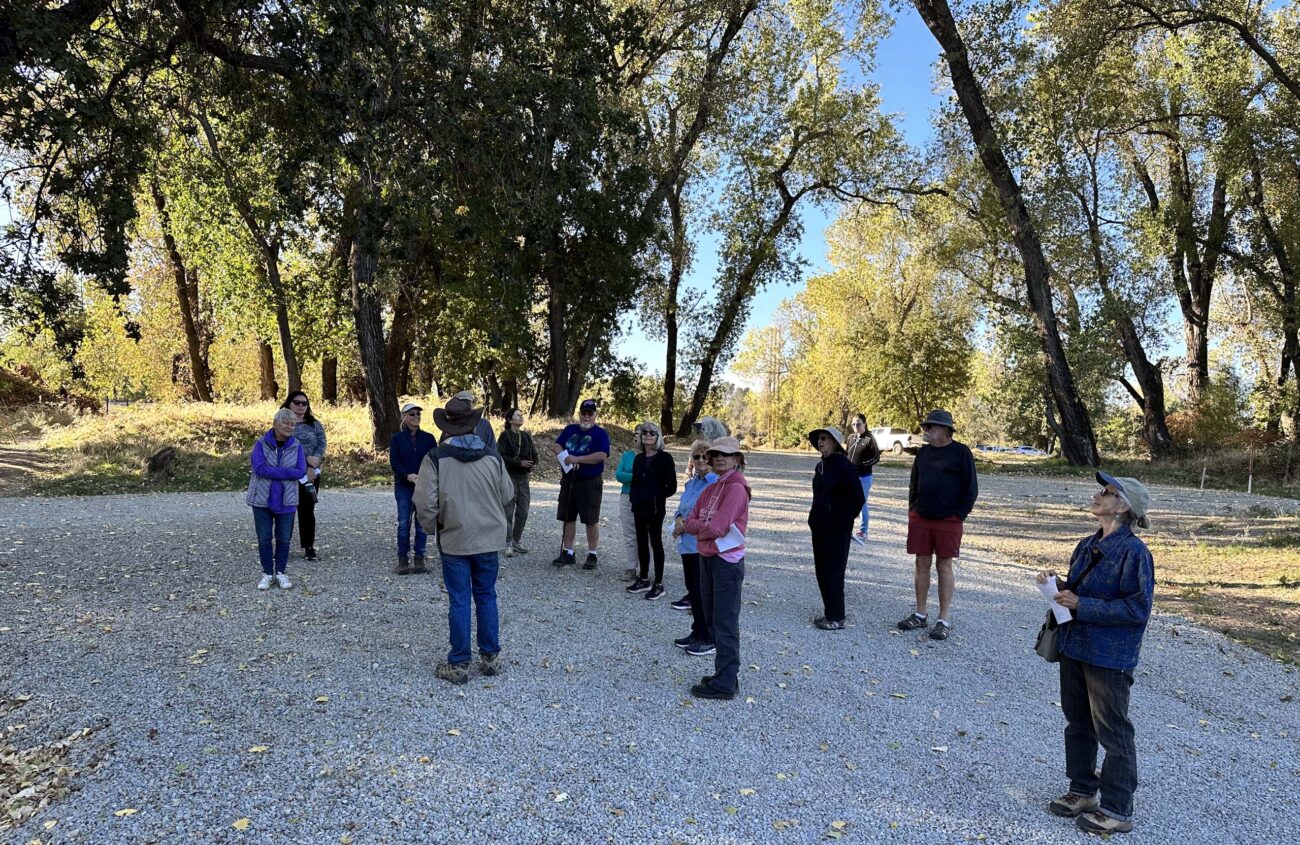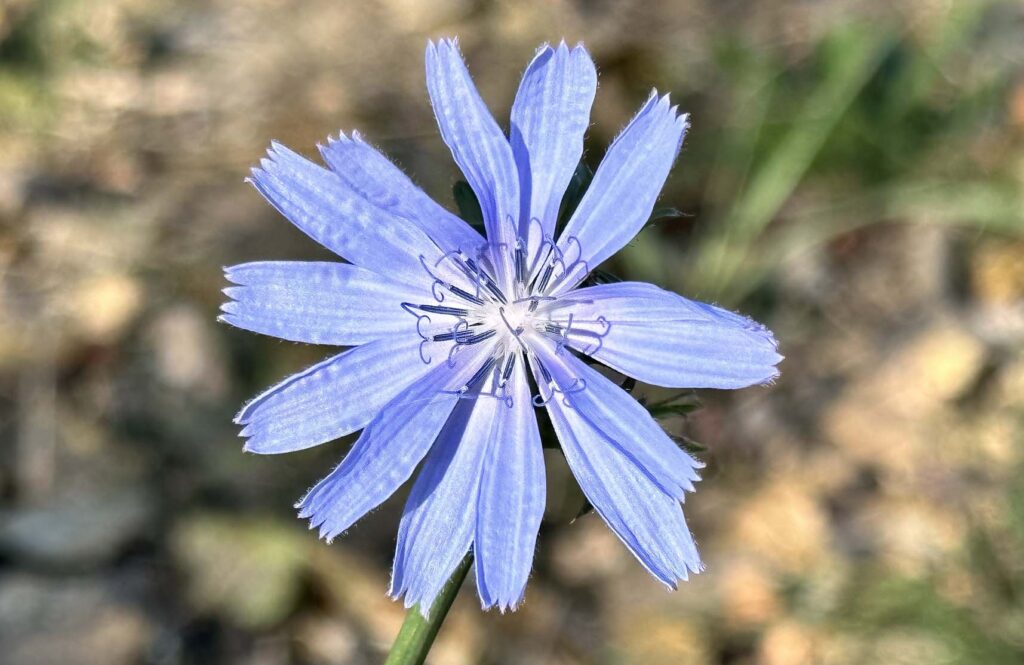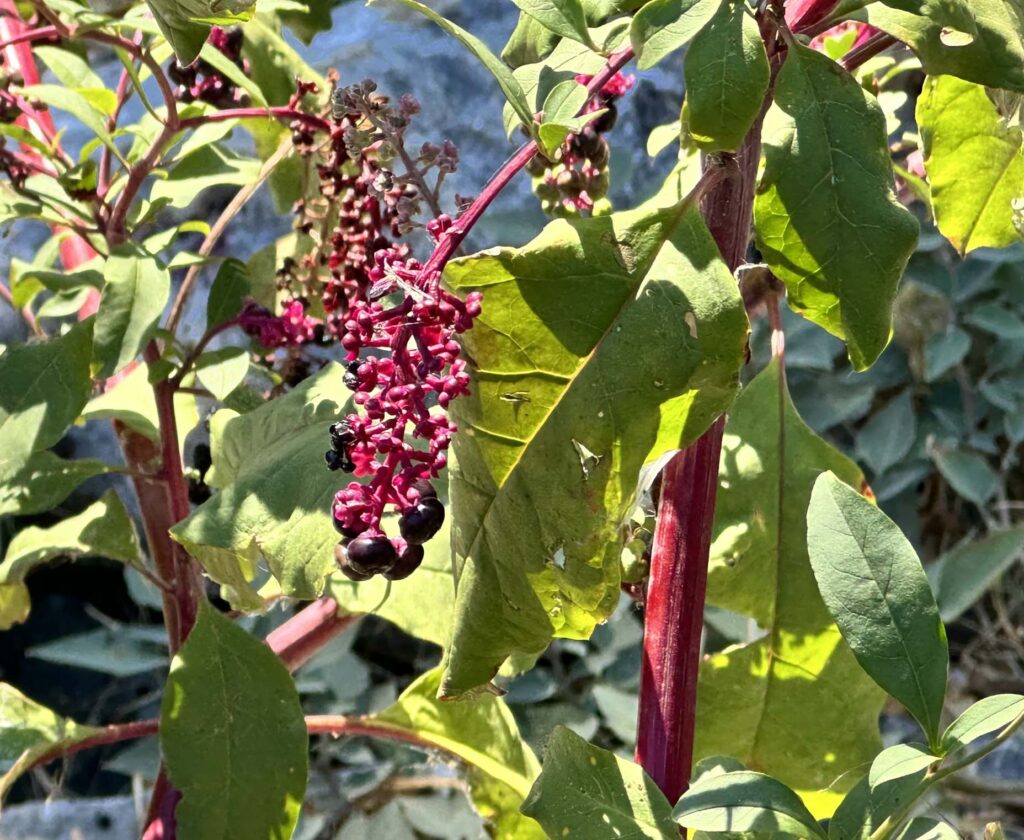
The field trip at Nur Pon Open Space in Redding brought about 20 plant lovers out for a pleasant, cool, morning stroll, once the wind died down.
This area has been highly disturbed by man over the last 130 years, and it has a very high concentration of non-native or exotic plants. Field trip leader David Ledger identified both native and non-native plants and talked about uses and unique features of several.

One non-native plant that was still in bloom was chicory (Cichorium intybus), a common weed in the sunflower family, which is native to Europe. The flowers are blue and all of its “petals,” or rays, are actually flowers. The flowers exhibit a unique characteristic: they can open up for a few hours in day and then all close and appear to disappear, only to re-open a few hours later. Chicory has green stems and leaves, and grows to about 4 feet tall. In colonial times, its roots were roasted and used as a substitute for coffee, although it does not have caffeine.

Another common exotic, invasive plant that we found was pokeweed (Phytolacca americana). This plant’s most noticeable features are its bright red stem and drooping, deep purple fruits. It can grow up to 10 feet tall. This plant is native to the Midwest, eastern United States, and the South. It is not native to Shasta County and is a fairly recent arrival, perhaps within the last 30 years, or so some old-timers tell me. All parts of the plant are quite poisonous, ranging from the roots being most toxic to the fruit being the least. Like poison oak, it is best to avoid it.

A plant list for Nur Pon Open Space will soon be available on our web site at https://chapters.cnps.org/shasta/. ~David Ledger
